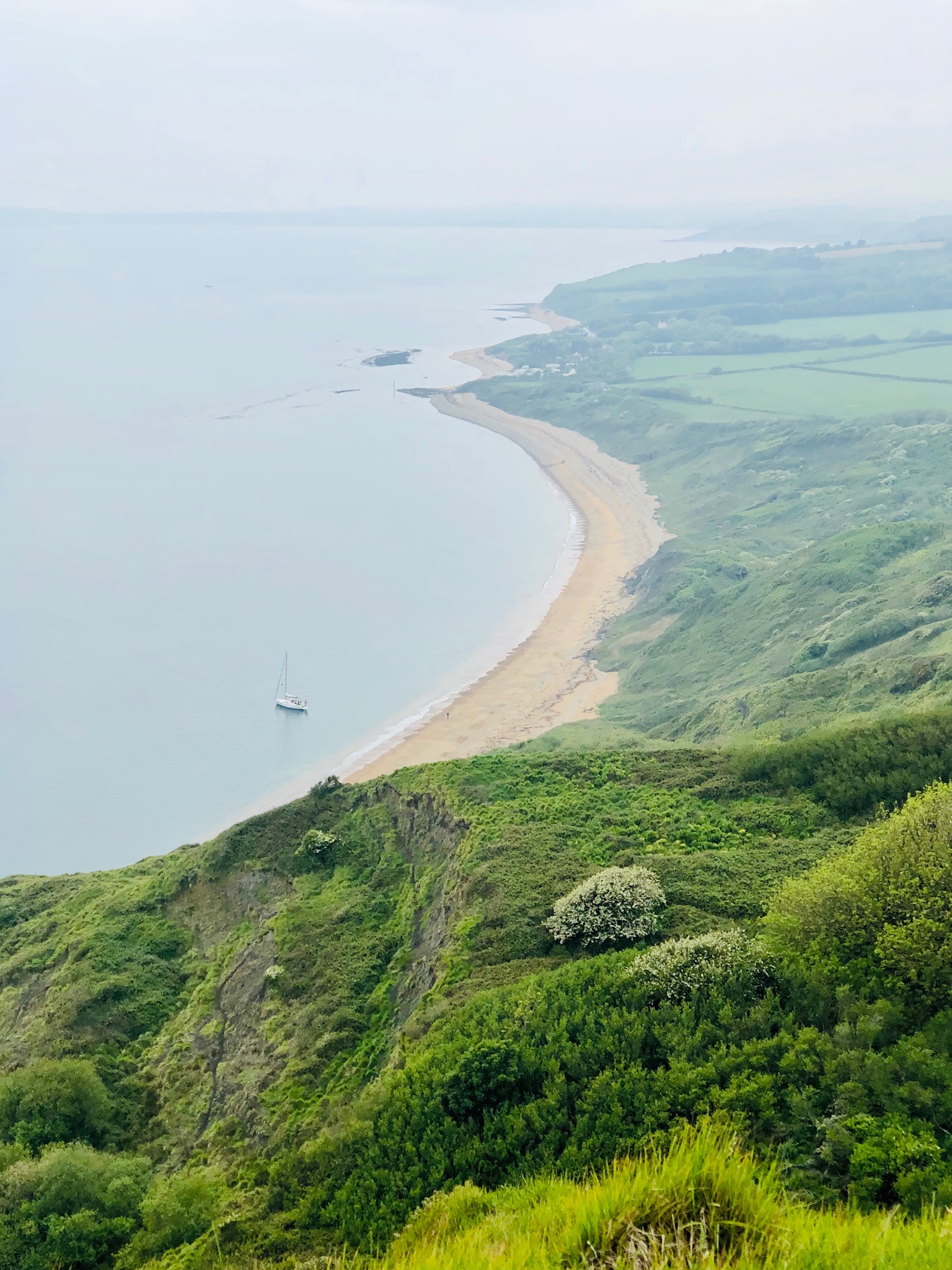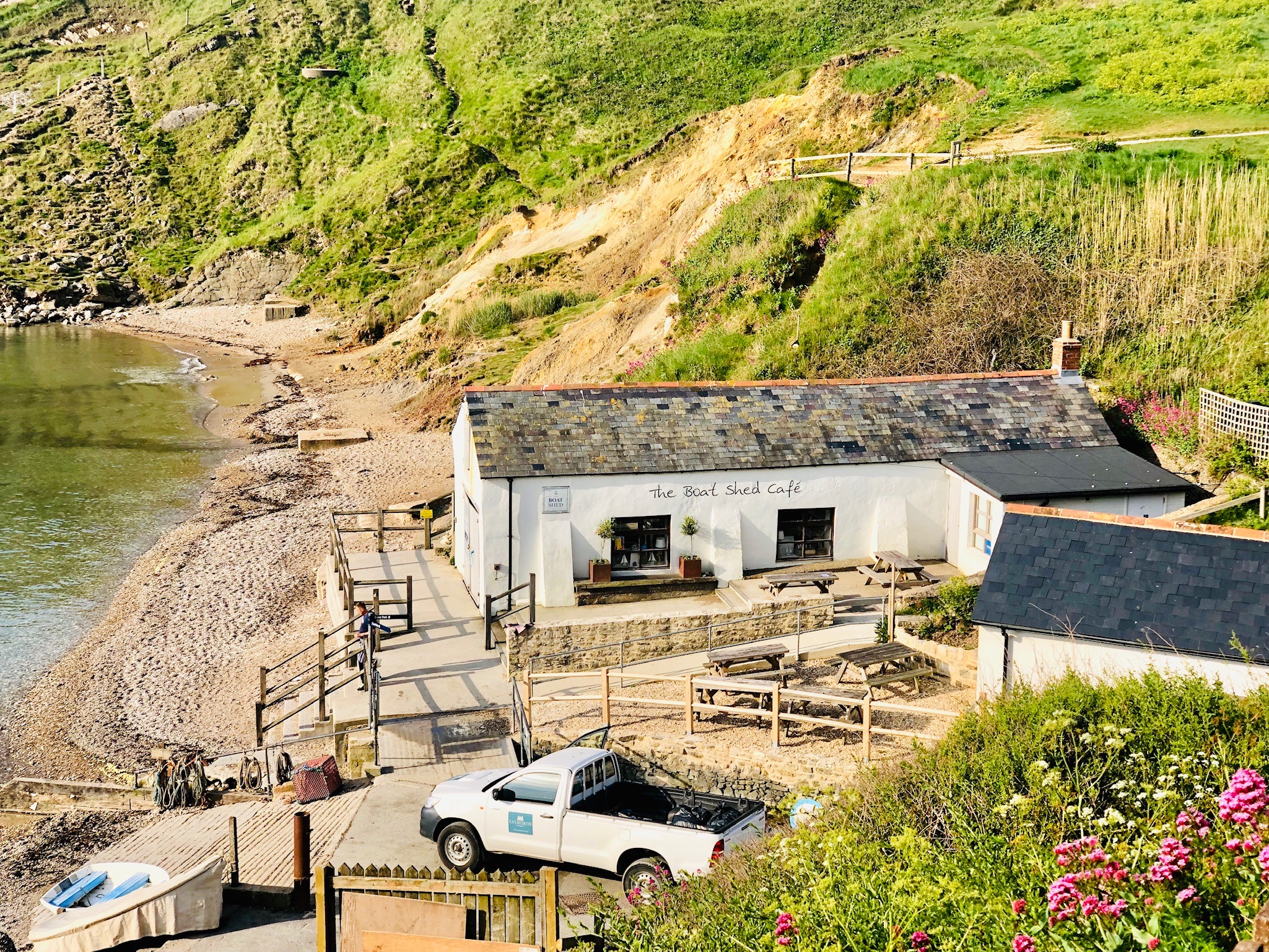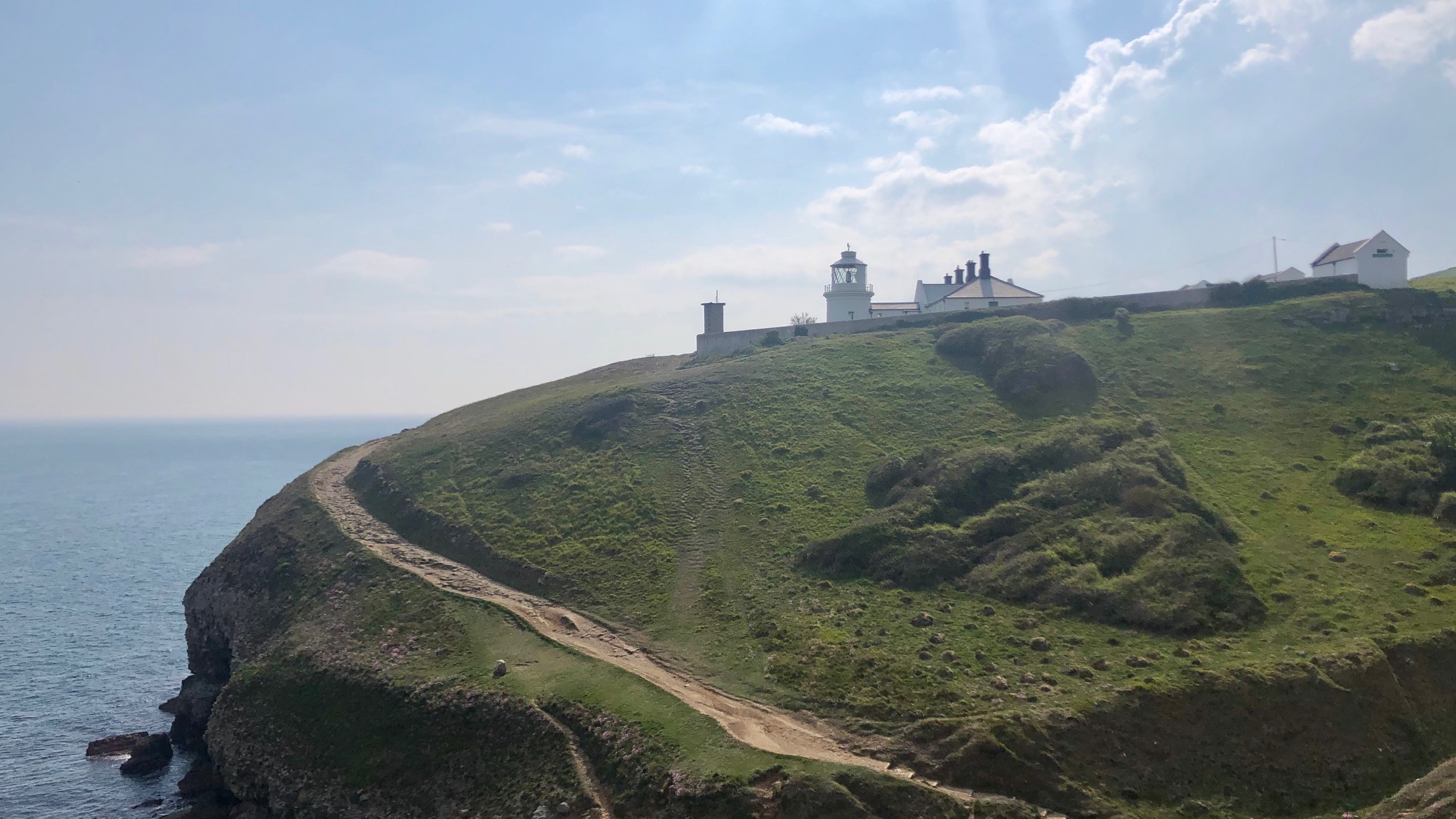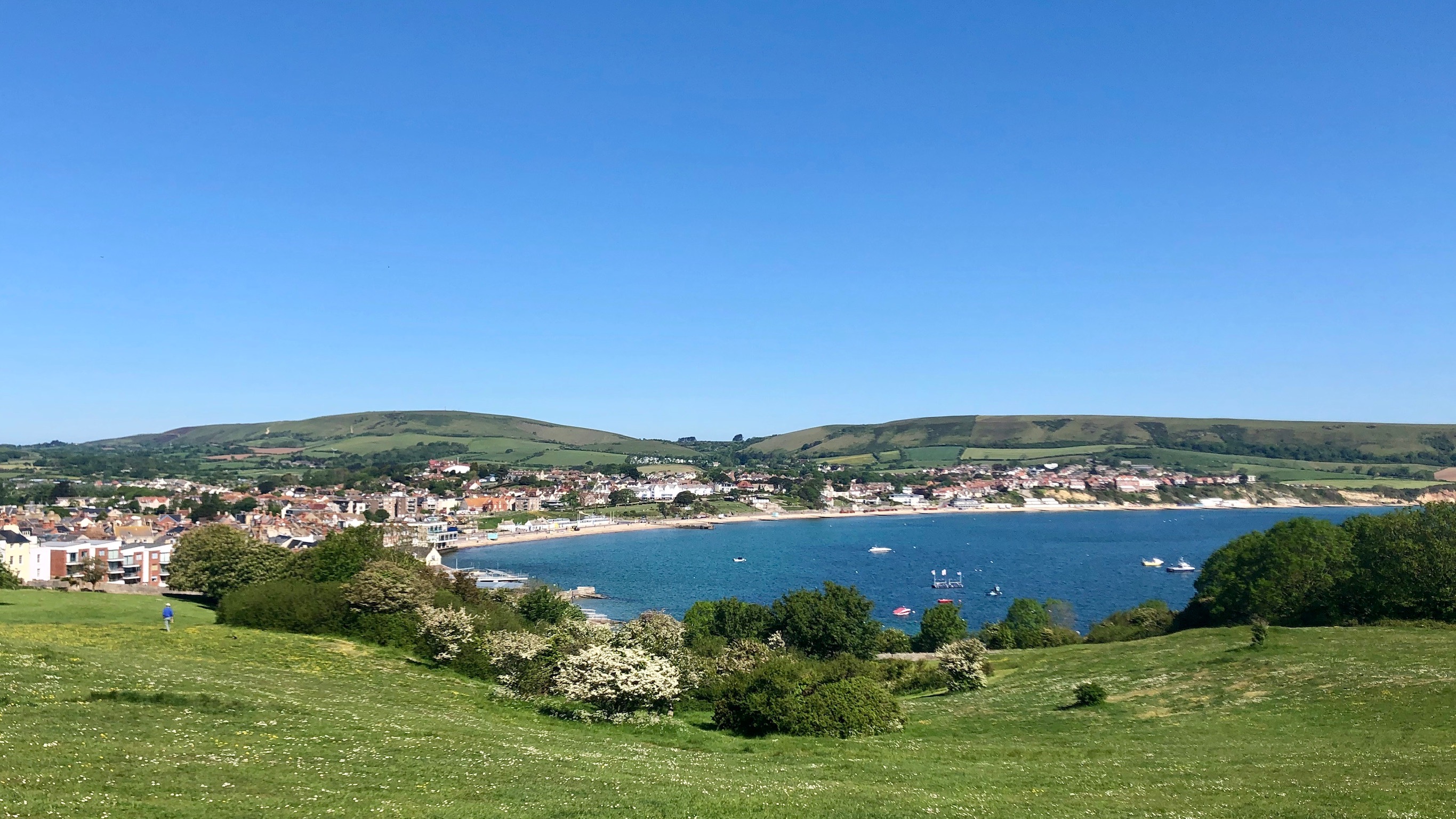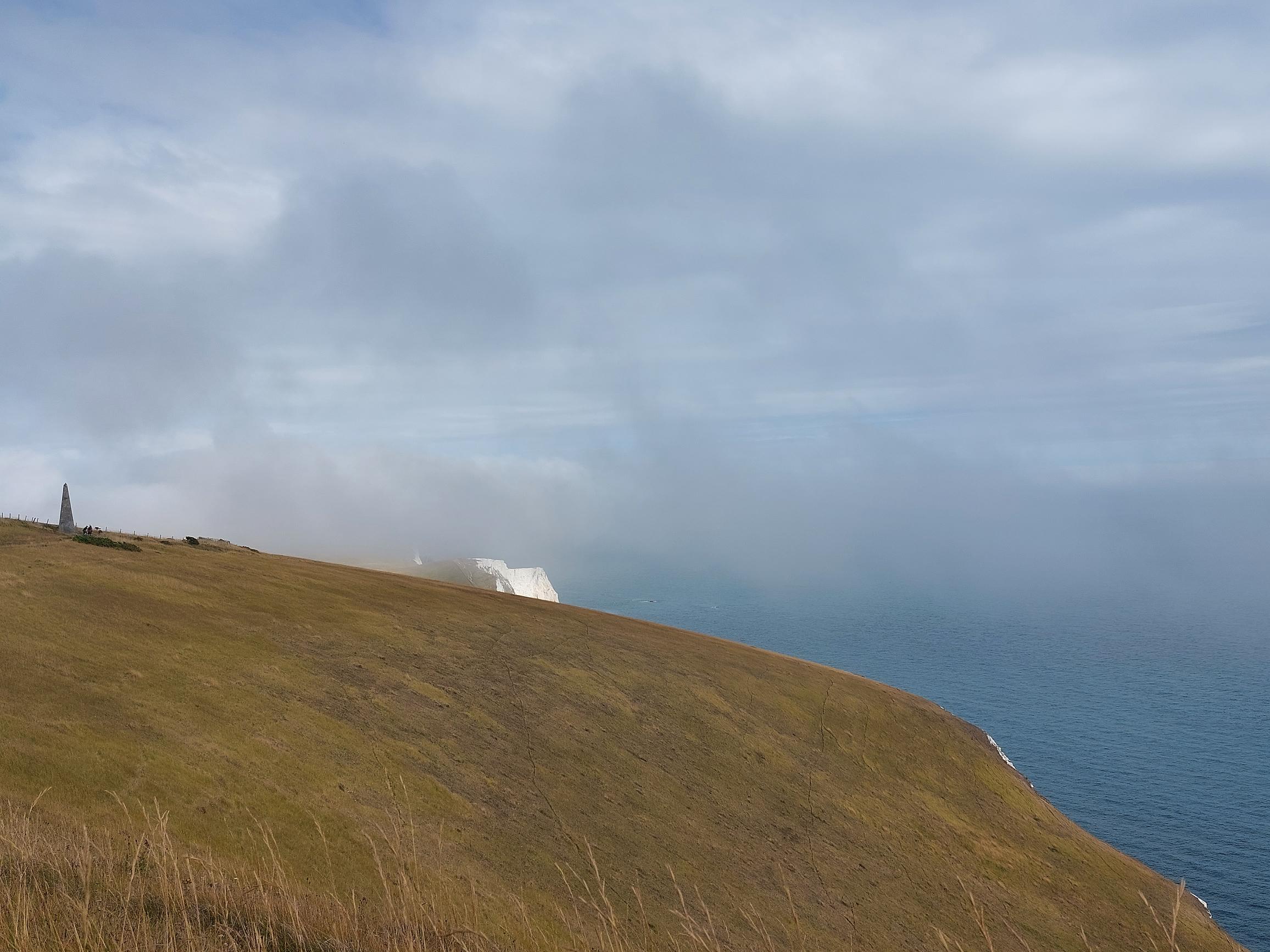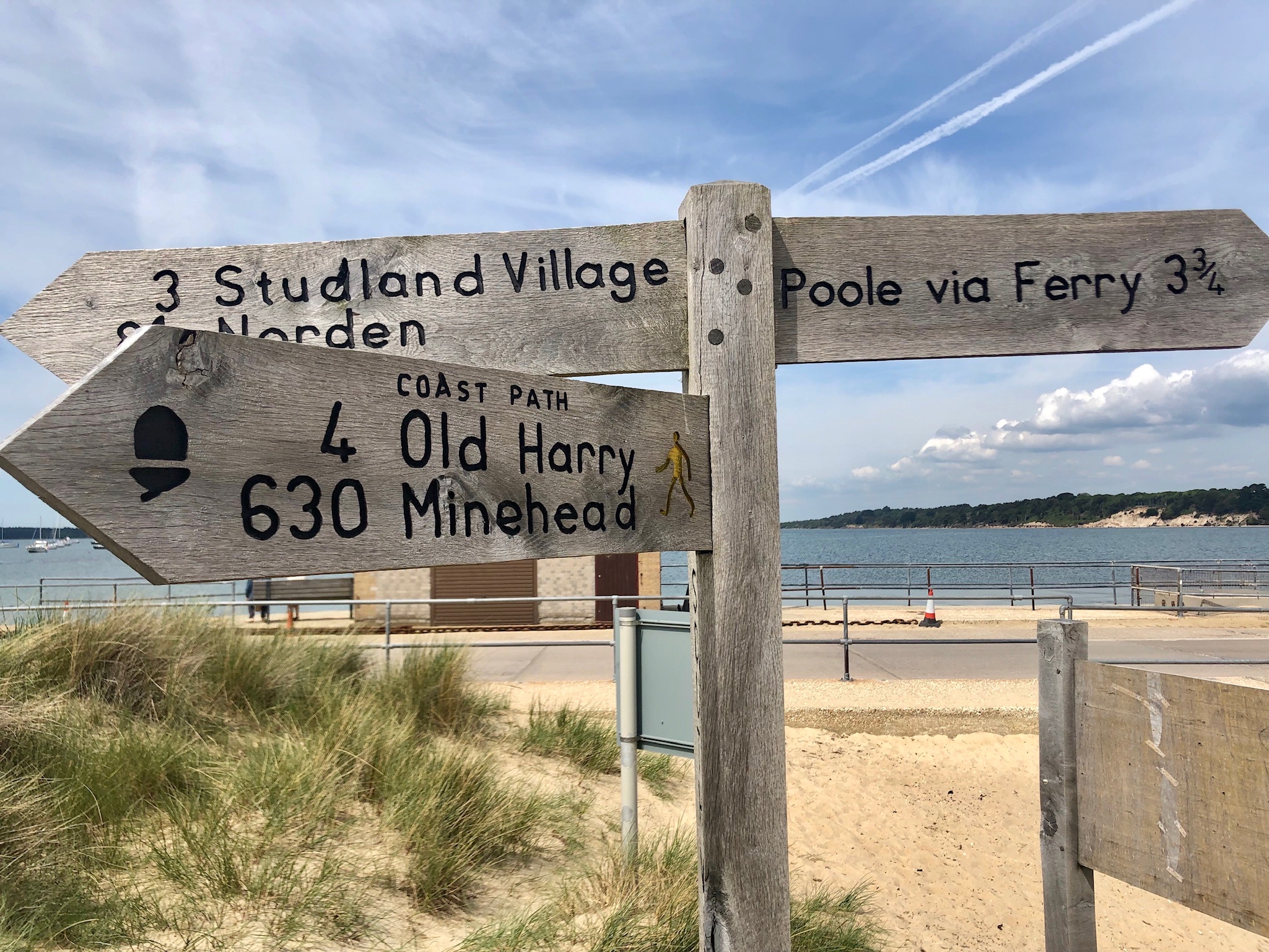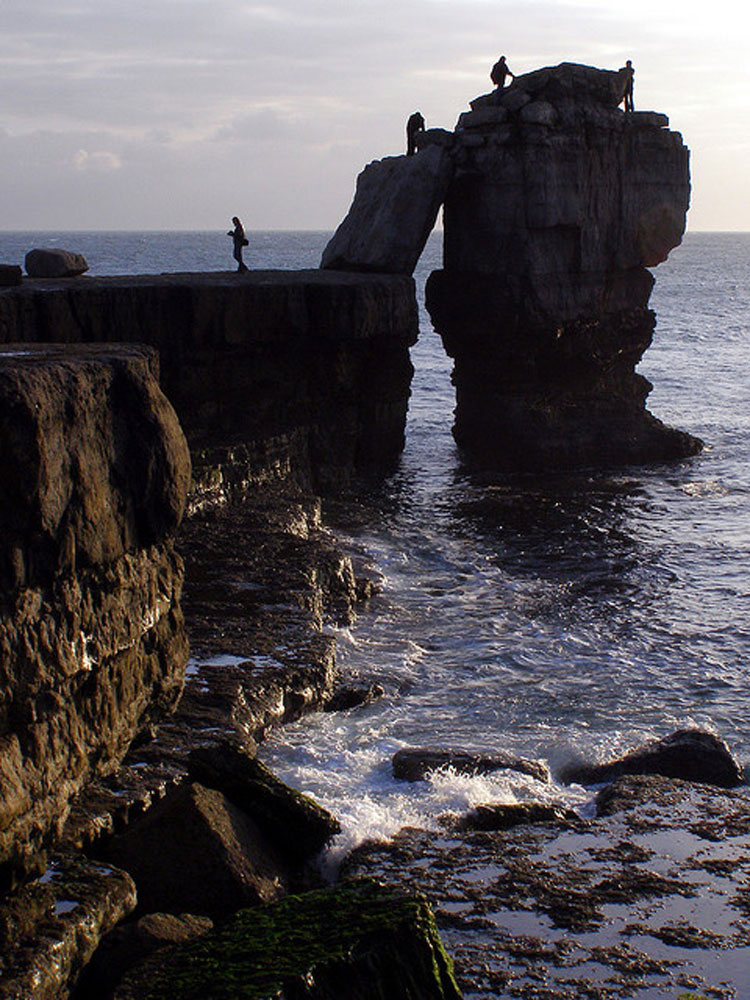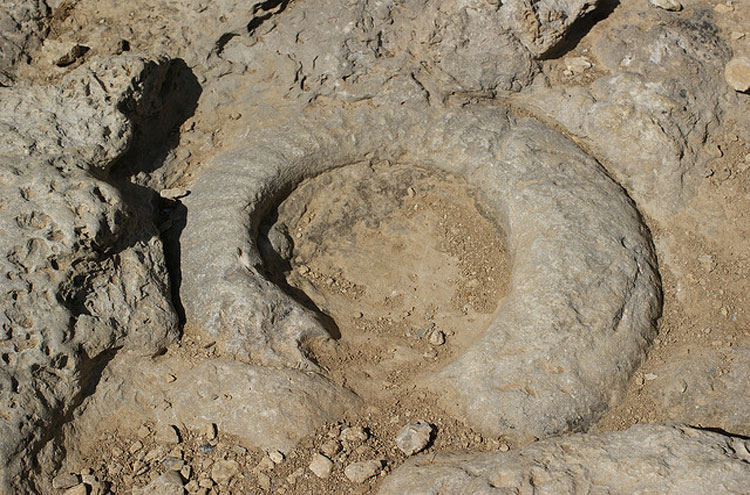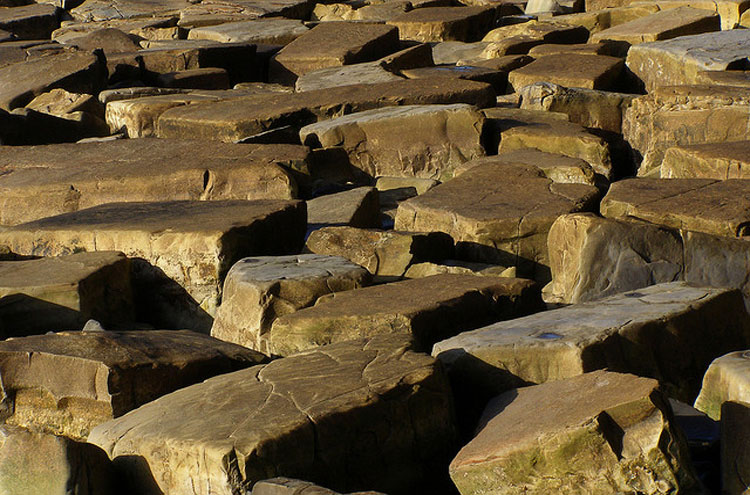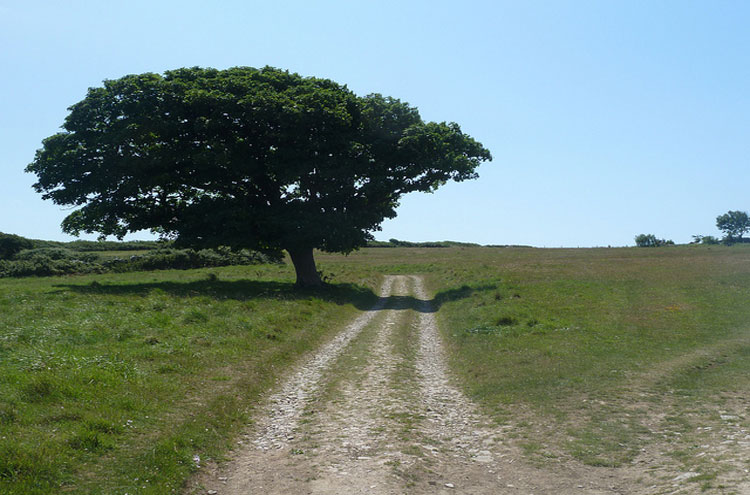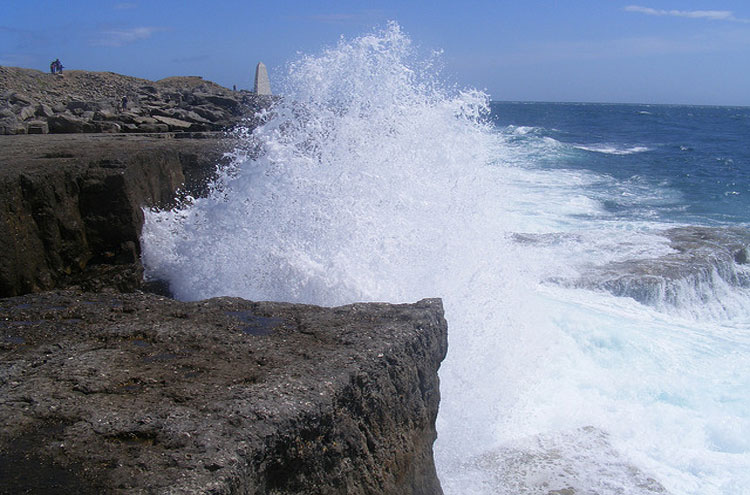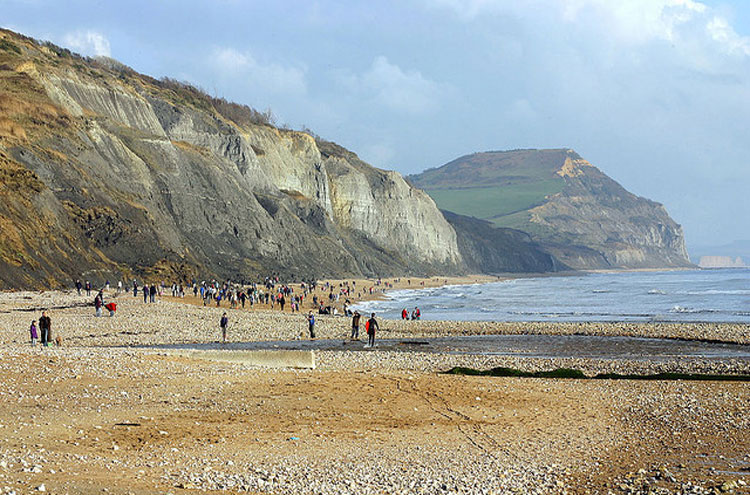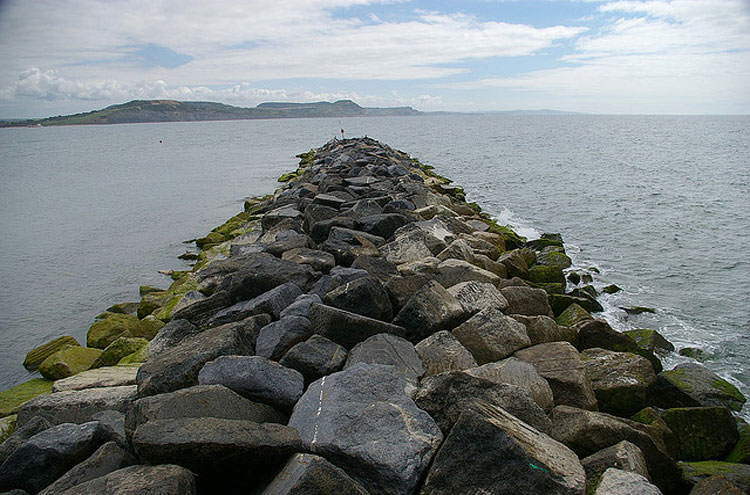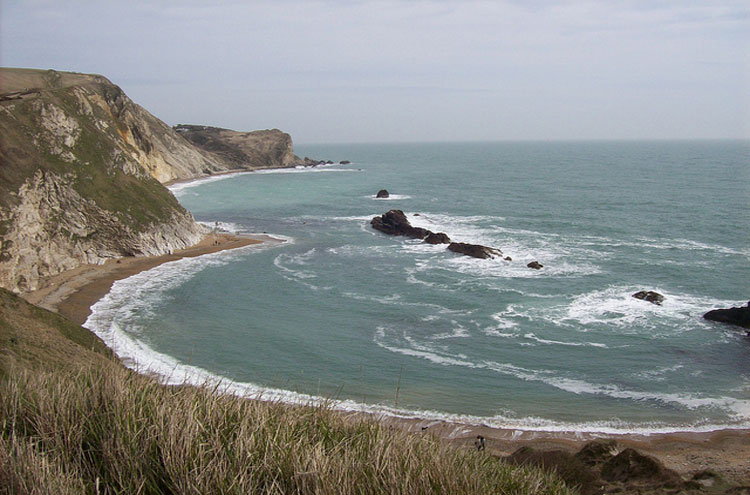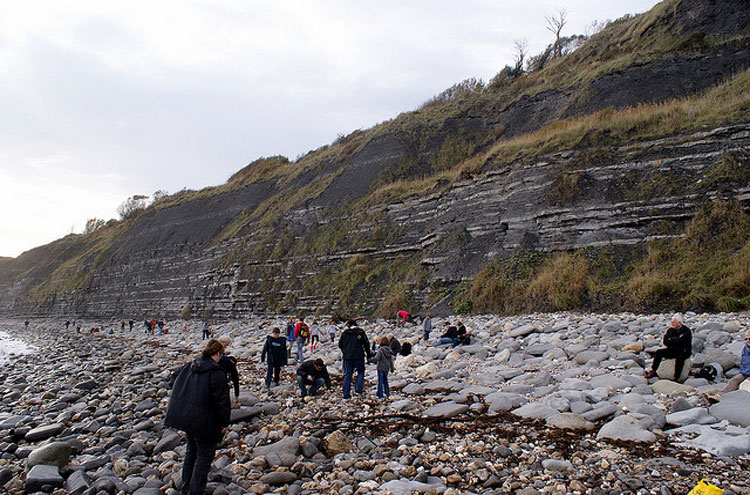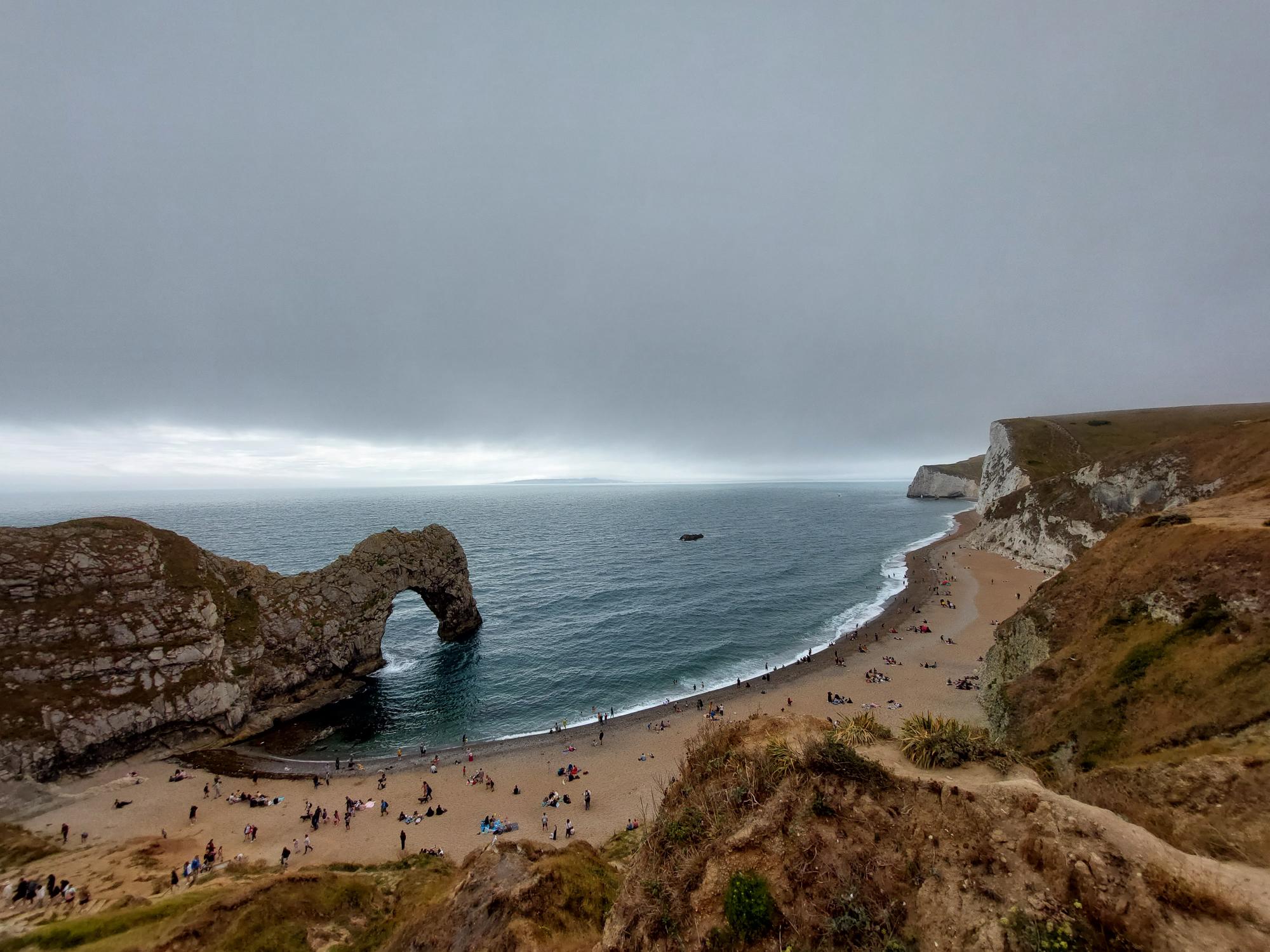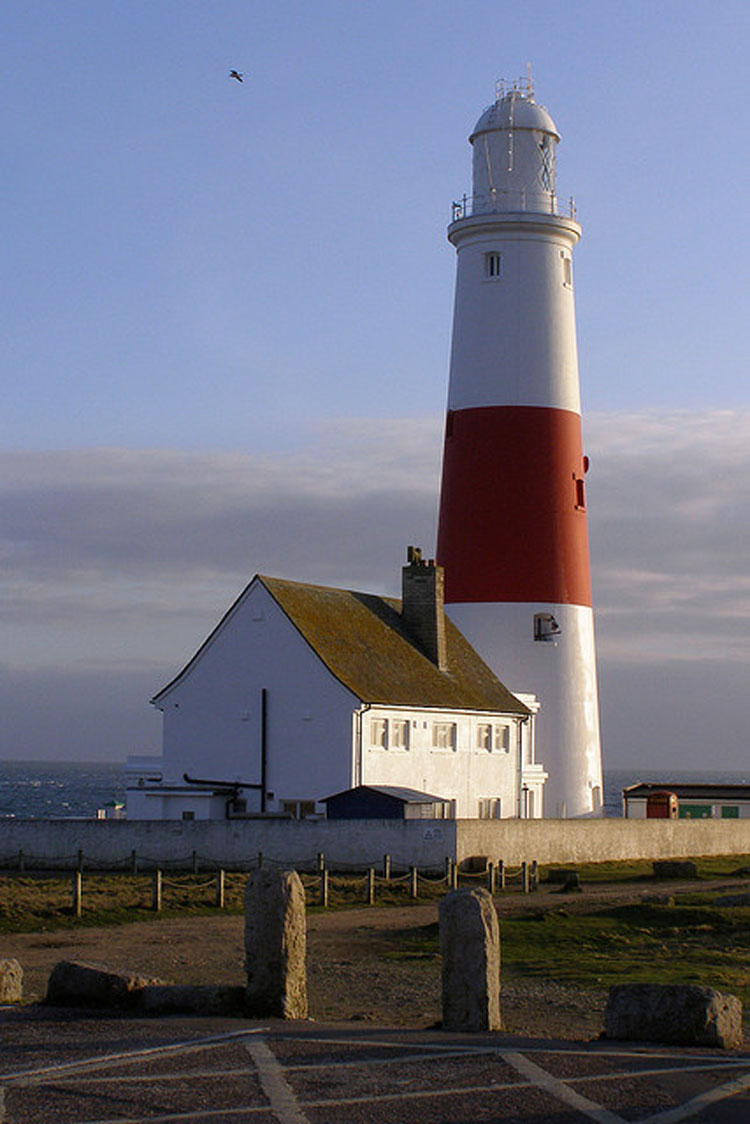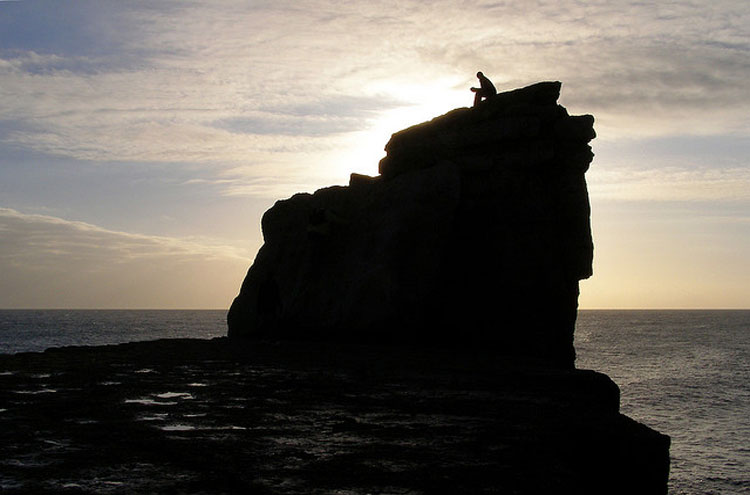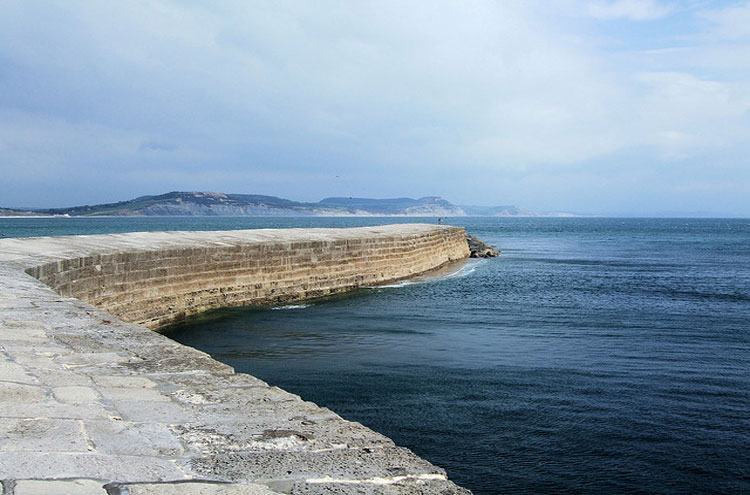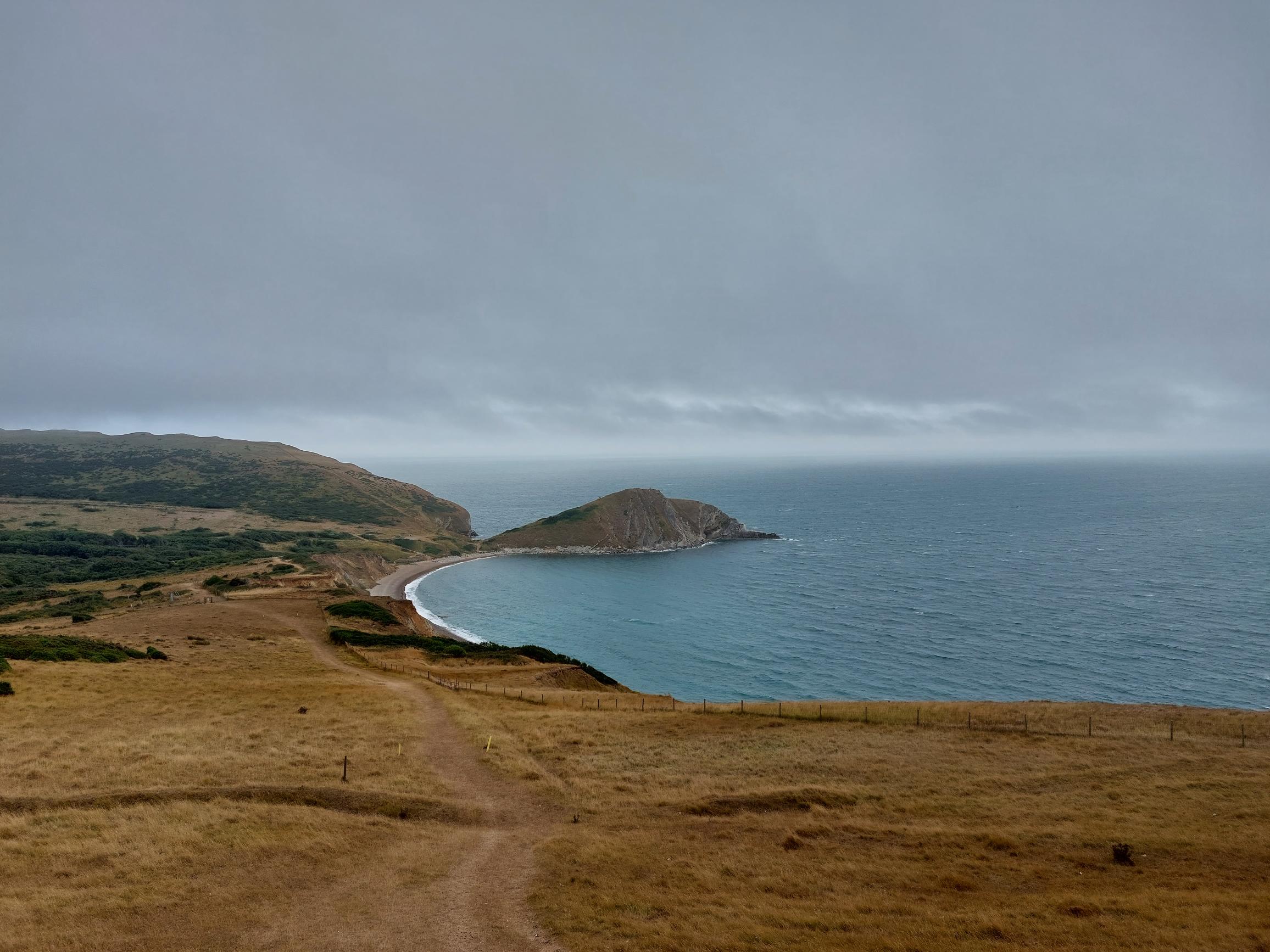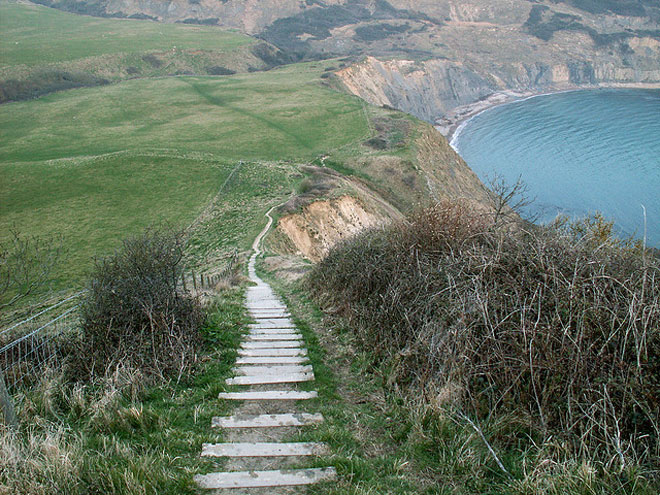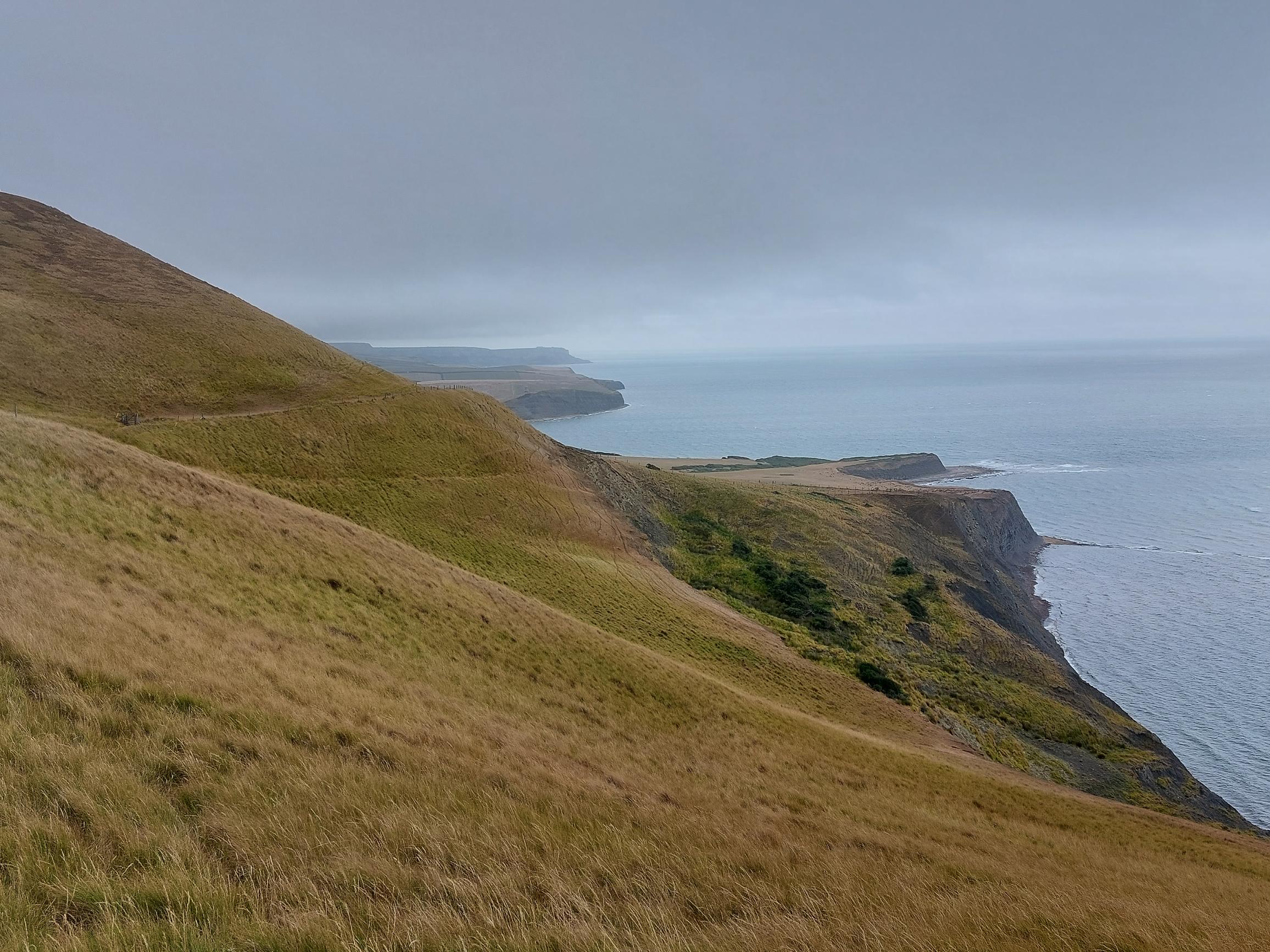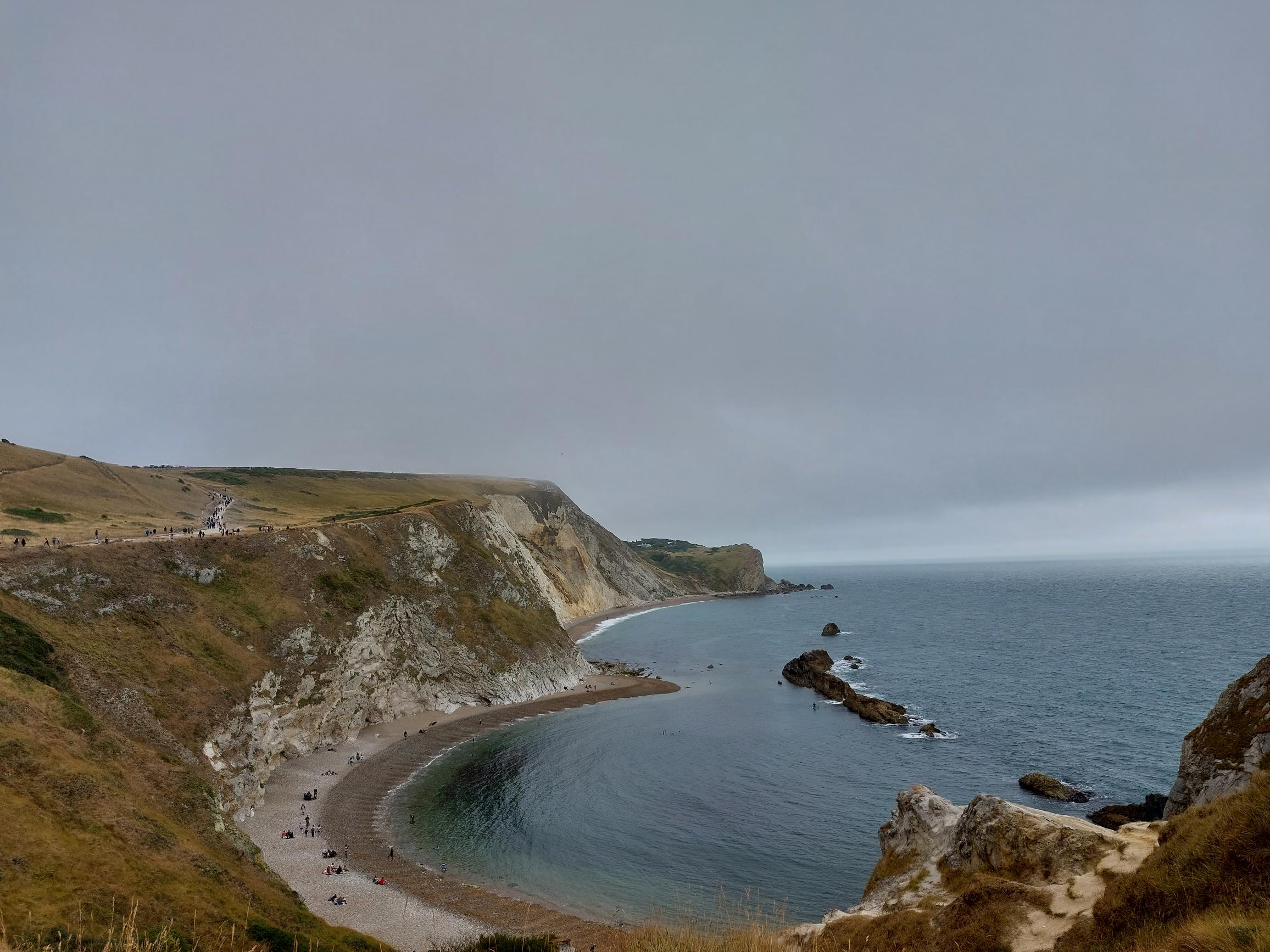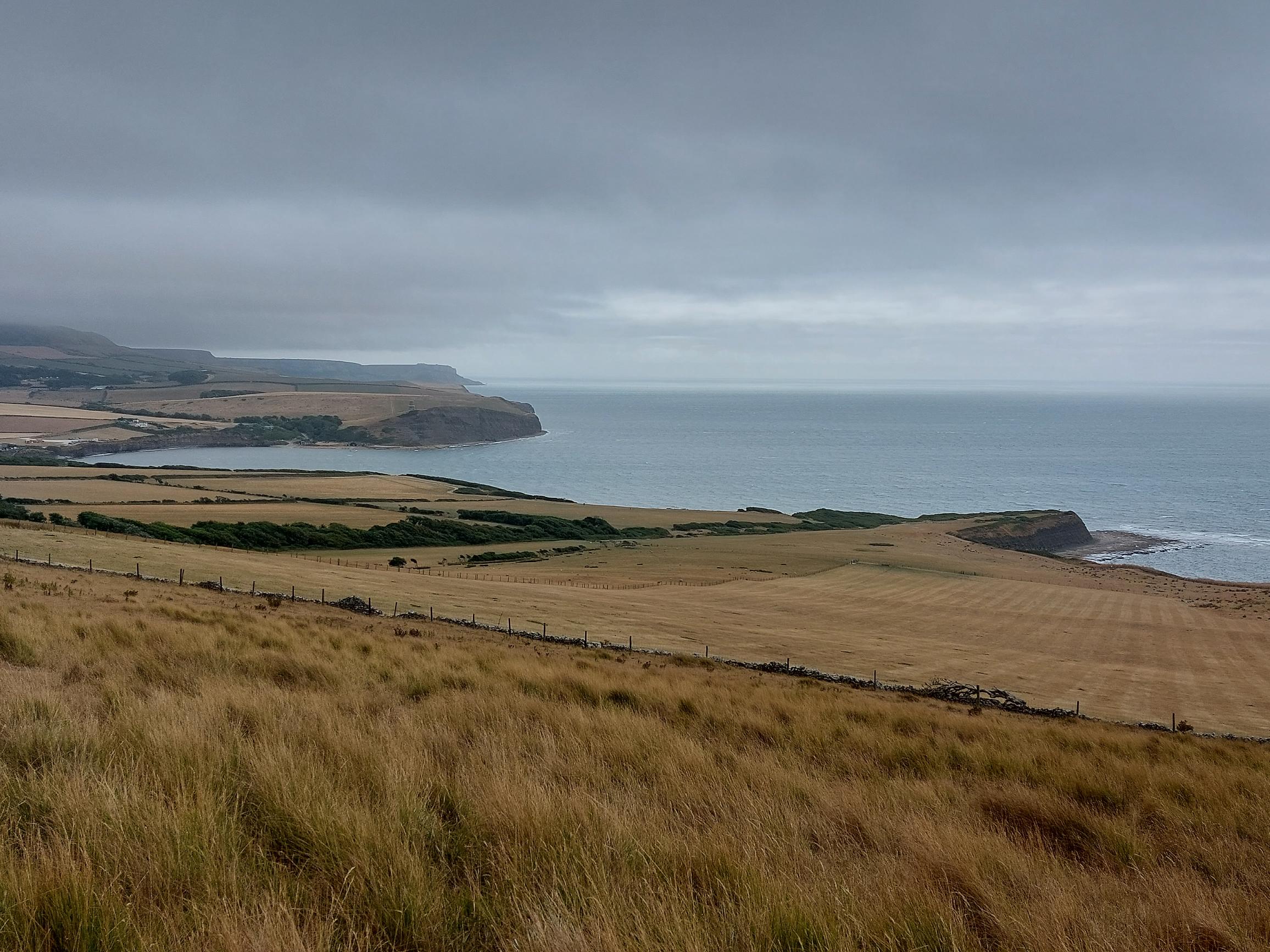Jurassic Coast
Key information: Jurassic Coast 
- This National Trail and World Heritage Site is part of the 660-mile South-west Coast Path.
- Some of the UK’s most beautiful coastal scenery and one of the world’s most important geological landscapes – the backyard of evolution: fossils found here led to the birth of paleontology.
- Huge choice of walks, from easy tasters to strenuous hikes through dramatic rifts, cliffs and rock strata.
Walkopedia rating
- Walkopedia rating87
- Beauty31
- Natural interest16
- Human interest12
- Charisma31
- Negative points3
- Total rating87
- Note: Negatives: Pretty popular in high season.
Vital Statistics
- Length: 152km in total
- Maximum Altitude: N/A
- Level of Difficulty: Variable
WALK SUMMARY
The counties of Dorset, Devon and Cornwall are perennially popular British holiday spots: the combination of relatively good summer weather, a relatively low population and dramatic coastlines scattered with good beaches have made this area popular with leisure travelers since the Georgian spa vogue.
The Jurassic coast, which runs from the red-rock cliffs of Exmouth to the lovely limestone of the Isle of Purbeck in the east, has a particularly powerful charisma: its rugged landscape could be said to be the birthplace of palaeontology. Though the first classified dinosaur bones were discovered on the edge of the Cotswolds, the sheer wealth of fossils pouring out of the crumbling rocks of these cliffs continue to provide exciting discoveries today. This is a great place for dino-mad children, though getting them to quit the fossil-strewn beaches and actually take a walk might be a problem.
The Jurassic coast is, ultimately, a living geology lesson; a history of the earth over hundreds of millions of years. Indeed, the Devonian Period is named after the county, where outcrops of its typical iron-rich red sandstone deposits, riddled with the fossils of the earliest land-walking fish, are common – especially in the area between Exmouth and Sidmouth, which, at the time, straddled the equator as part of the continent of Euramerica.
The Undercliff nature reserve, outside lovely Georgian Lyme Regis, is a picture-perfect landslide of sandstone over clay – a celebrated event in 1839 which brought flocks of visitors, including Queen Victoria. Because of the instability of the land, Lyme’s beaches have surrendered remains of ichthyosaurs, dimorphodons, plesiosaurs and many, many more.
28km-long Chesil beach’s collection of perfect round pebbles, which increase in size as you work your way eastwards, remains a geological mystery, while the Isle of Portland, rearing majestically from the sea, hosts petrified forests 135 million years old and ancient quarries.
Further east, beyond the dramatic rock arch of Durdle Door, Lulworth bay is a fine example of rock vulnerabilities: when a stream broke through the coastal limestone barrier, the sea eroded a perfect horseshoe of softer clay all the way to the impermeable chalk cliffs behind.
The Isle of Purbeck, a National Trust site covered in castles and home to a wondrous collection of wildlife, rises up over the inner marshland surrounding Poole harbor, passing the petrified footprints of gigantic dinosaurs and affording majestic vistas of chalk stacks such as the celebrated Old Harry, only a few thousand years ago a sturdy part of the mainland.
The breathtaking history of the earth represented by these features, however, cannot begin to communicate their effect on eye and heart. The whole stretch of the Jurassic coast is an admirable mix of rural and elegant, of mild and dramatic, overlaid with a powerful sense of Britain’s age-old relationship with the cradle of life itself, the ocean.
There’s not a dull stretch along this path, but Walkopedia recommends:
Seaton/The Lyme Regis Undercliff/Golden Cap: 11/22 km, Moderate-Strenuous. A wonderful walk of contrasts which leads through marshes, clifftops, the dense pseudo-tropical woodland of the Lyme Regis Undercliff, the elegant delight of Lyme Regis itself, the fossil-strewn beach at Charmouth and a good climb up to spectacular views on the Golden Cap, the south coast’s highest point. 7 miles Seaton-Lyme; 7 miles on past Golden Cap to Seatown. Note that the Undercliff, formed by a massive 19th-century landslide, is unstable off the path, and the only way out is forward or back, with no habitations along the route; expect to spend 2-3 hours on this stretch and plan accordingly.
Between Weymouth and Kimmeridge: this is arguably the finest stretch of the Jurassic Coast, but is effectively 2 days' walking if you do it all.
If done in two days, the first day would be Weymouth to Lulworth Cove, a demanding 11-mile rollercoaster above the area's white chalk cliffs, with superb views back east to Portland Bill. Between the famous rock arch of Durdle Door and Lulworth, you will be far from alone – or at Lulworth Cove, although it is amazing in its own way.
The 7+ mile walk between Lulworth and Kimmeridge is also a stunner, spending time meandering over the hills of Lulworth military ranges. It is another demanding up and down, but a really memorable walk.
Portland: 21 km circuit, 9.5 km one-way with bus links; easy-moderate. Portland is essentially a limestone island jutting out into the west English Channel. With a coastline consisting almost entirely of spectacular cliffs, this – and particularly Portland Bill lighthouse, at its Southern tip – is a great place both for views over Chesil Beach and along the coast (you see more of it from here than from any other point) and off into the wild expanses of the ocean. Walk a circuit starting at Chesil Beach and finishing at Ferry Bridge, or walk one-way to Portland Bill and catch the x10 bus back; passing ancient quarries, ruined castles, sculptures, a tiny museum, a bird observatory, butterfly sanctuary and pirates’ graveyard on the way.
The Studland Peninsula: 12/24 km, moderate: the final leg of the south coast path and Jurassic coast leads from the lovely village of Worth Matravers, for a stretch of high but easy clifftop walking past St Adhelm’s and Durlston Heads, the remains mediaeval strip-farming, a quarry, a lighthouse, giant stone globe, castle and deepwater swimming at Dancing Ledge before dropping down to the former fishing village of Swanage (roughly 13km), now a popular holiday spot. Catch the bus to Poole/Bournemouth from here, or climb up onto Ballard Down for breathtaking views of the Old Harry chalk stacks before crossing from World Heritage Site to the National Trust reserve of Studland Heath. Backing on to three celebrated miles of sand beach (and – be warned – an equally celebrated naturist strip), the heath is a haven to much wildlife that is almost extinct elsewhere, including smooth snakes and sand lizards – and also, beware – adders. From near the steel sculpture at South Haven that marks the end of the trail, catch the chain ferry back to Poole. Keep an eye out for dinosaur footprints all along this coast, and also keep an eye trained on the sea for local, much-loved, dolphins.
OUR FRIENDS' EXPERIENCES
SW Coast Path Weymouth to Studland 2019 - Paul Hadaway
Day 1 - Weymouth to Lulworth
2 months ago I was sitting in a small ripped tent awake at 2am with an upset stomach in the Simien Mts in Ethiopia thinking I was over camping – too rough and too tiring.
In the B&B in Weymouth in a room of Alice in Wonderland proportions and a paper-thin wall allowing the couple arguing 3 rooms away to interrupt sleep, I was nostalgic for my African tent.
We added 2.5km to the first day’s planned 18km looking for an acceptable coffee in Weymouth. I don’t have anything particular against Weymouth, the surviving Georgian architecture is fabulous (pic 1) and over 30 years ago I married Lisa here. We’re still married and walking to Studland together.
It’s our first trip to Weymouth since our wedding day, the sun is coming out and when we found it, the coffee was highly acceptable. The attraction of Studland of course is that the Pig-on-the-Beach is there. A 4-day trot to the Pig.
One of the many great things about SW Coast path is that nothing gets in its way; through town and country it carries on – 630 miles of stunningly beautiful coastline. And as a result, walking out of a town the people change noticeably, reducing in number and altering in character and dress. From Weymouth to the outer reaches of Preston walking along the sea wall with the cliffs of Redcliffe Point, Osmington Mills, Ringstead Bay and White Nothe stretching out before us, the number of people thin, they still all wear track suits but the bodies thin too. Walking carrying a bag of doughnuts can’t be exercise can it?
Leaving Preston behind we’re in.....
READ MOREYour comments on this walk, your experiences and suggestions, and your photos are very welcome. Where appropriate, you will be credited for your contribution.
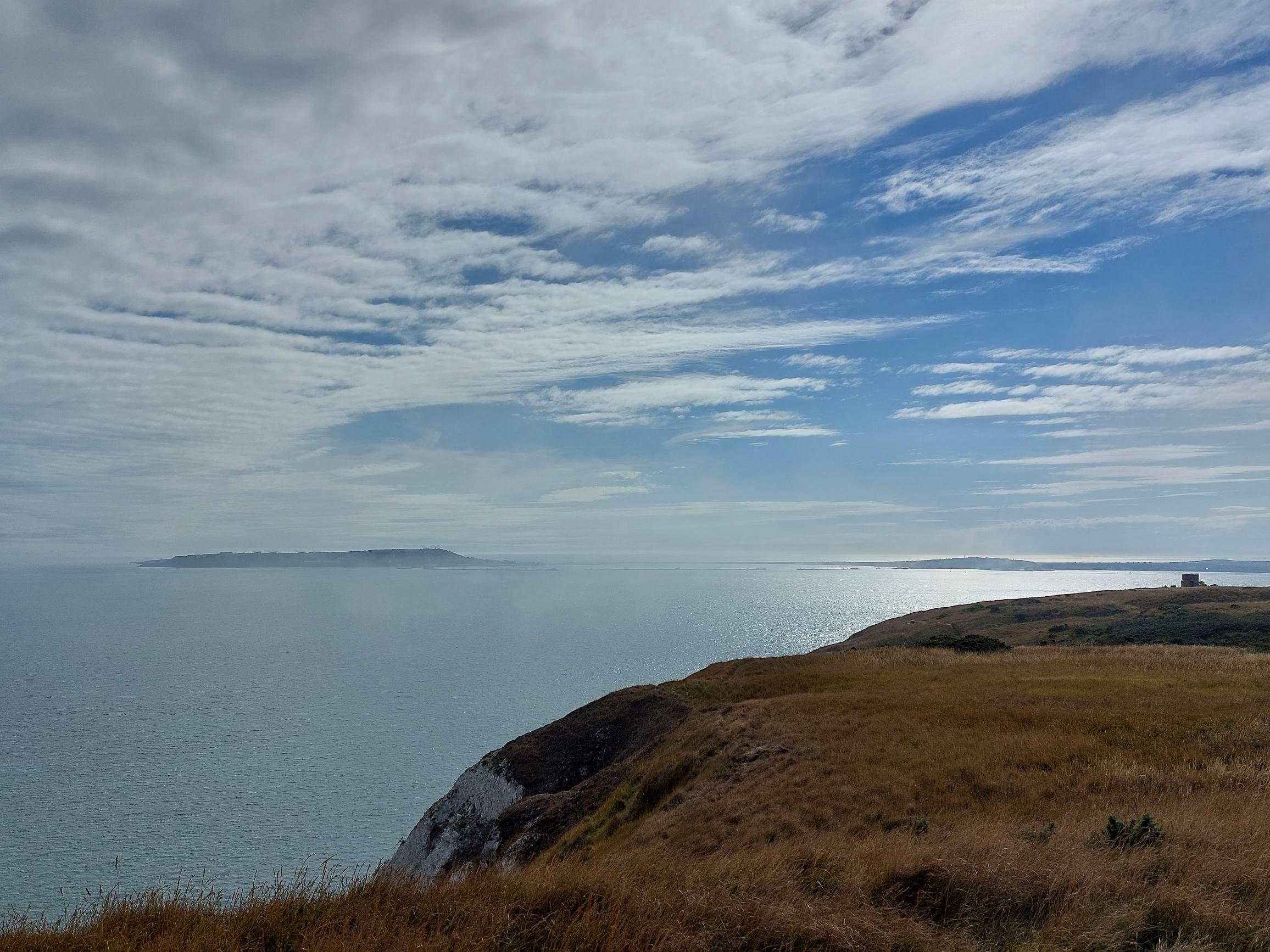
We have a lot of helpful practical information and tips about this walk, covering everything from the best books and maps, to timing and weather, geting there, possible problems, whether you need a guide and where to find them, and useful websites. This section is only open to members.
Membership is FREE AND JOINING TAKES 30 SECONDS. To login or sign up click here
Safety and problems: All walks have inherent risks and potential problems, and many of the walks featured on this website involve significant risks, dangers and problems. Problems of any sort can arise on any walk. This website does not purport to identify any (or all) actual or potential risks, dangers and problems that may relate to any particular walk.
Any person who is considering undertaking this walk should do careful research and make their own assessment of the risks, dangers and possible problems involved. They should also go to “Important information” for further important information.
Anyone planning an expedition to this place should see further important information about this walk.
Safety and problems: All walks have inherent risks and potential problems, and many of the walks featured on this website involve significant risks, dangers and problems. Problems of any sort can arise on any walk. This website does not purport to identify any (or all) actual or potential risks, dangers and problems that may relate to any particular walk.
Any person who is considering undertaking this walk should do careful research and make their own assessment of the risks, dangers and possible problems involved. They should also go to “Important information” for further important information.
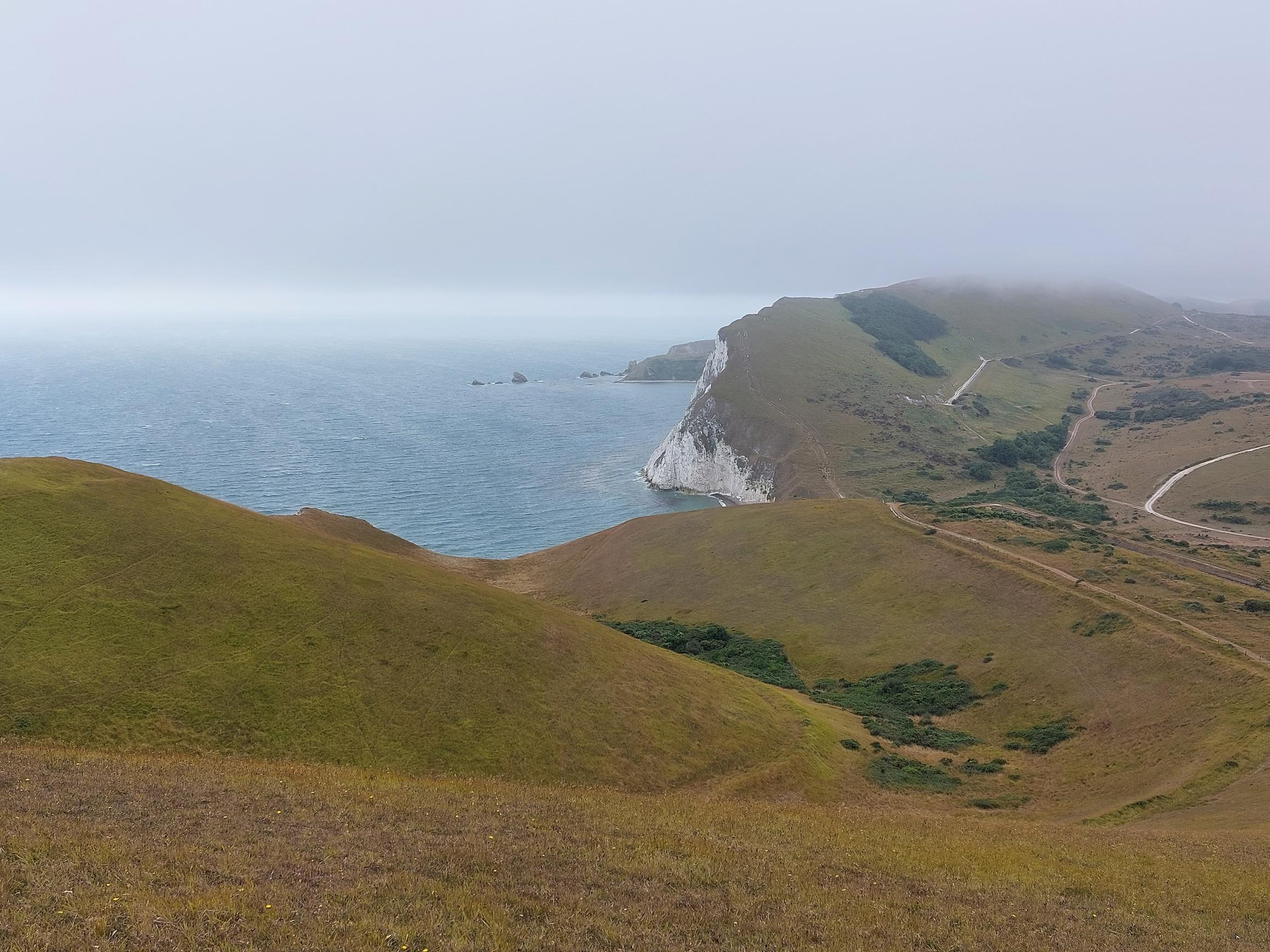
OTHER ACCOUNTS
share your experiences
Add your experiences, suggestions and photos. We would be delighted to receive your writing and ideas (which will be attributed appropriately where published).
Anyone planning an expedition to this place should see further important information about this walk.
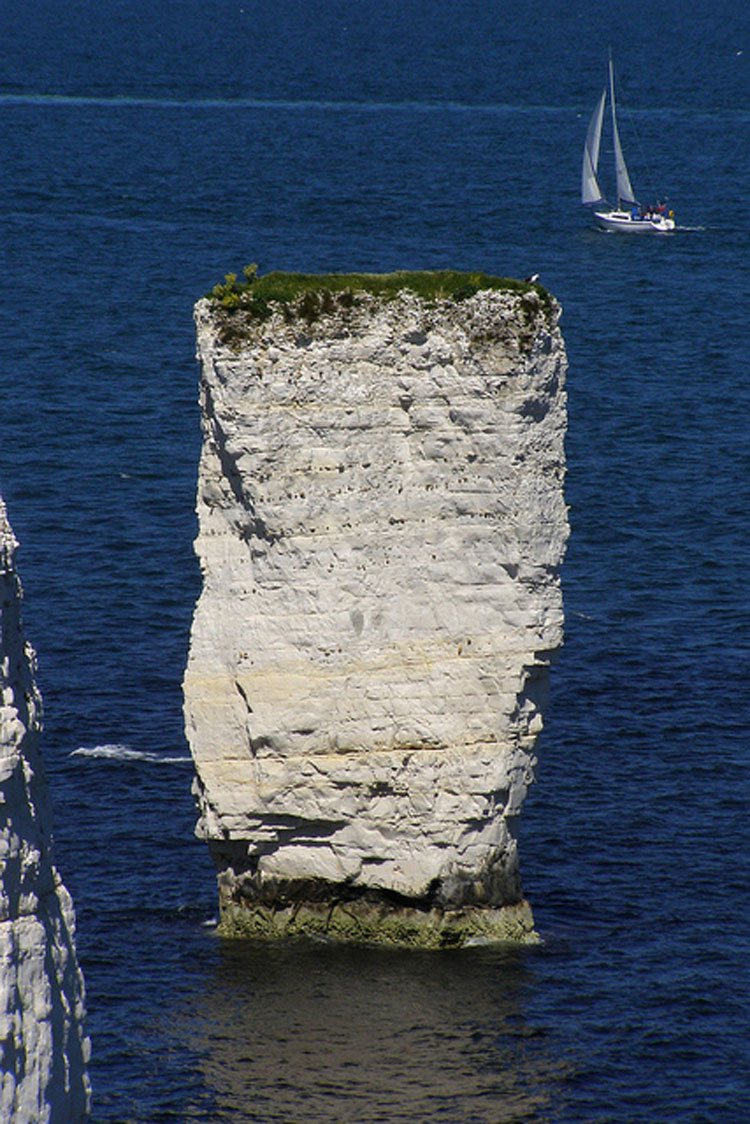
Responsible travel matters, a lot. How you travel will make a real difference - for better or worse. PLEASE consider this when making plans. Read more



